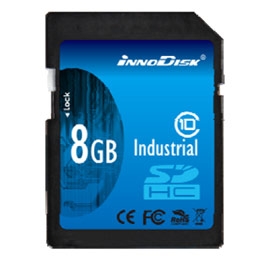
16GB
Wide Temp
InnoDisk Wide Temp Industrial SD Card is a slim and low power consumed storage module that designed especially for portable devices. InnoDisk Industrial SD Card is compatible with SD 2.0 standard and supports SDHC Class 10 that provides excellent performance. The built-in auto ECC function can also detect and correct errors during data transfer. Moreover, InnoDisk Industrial SD Card supports standby and sleep mode that reduces power consumption in advance for application with limited power source.
Wide Temperature Industrial Grade SD (Secure Digital) Cards are specifically designed, manufactured and tested to withstand extreme environmental conditions and to improve system reliability and endurance. At the heart of each card there is an advanced microcontroller that performs elaborate Flash modules management including 5 Bytes on-the-fly Error Detection and 4-Bytes Error Correction (EDC/ECC), bad block management (BBM) and extensive wear leveling.
Available in 512MB to 16GB
Selects the highest reliability Single Level Cell (SLC) Flash for its
superior endurance. This combination allows achieving 2,000,000 hours for 256MB,
512MB, 1GB, 2GB, 4GB and 8GB capacities.
| Model variation |
 Industrial SD Card ( 0c to 70c) Industrial SD Card ( 0c to 70c) |
 Industrial Wide Temp SD Card (-25c to 85c) Industrial Wide Temp SD Card (-25c to 85c) |



